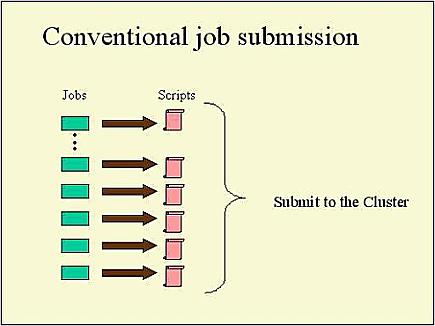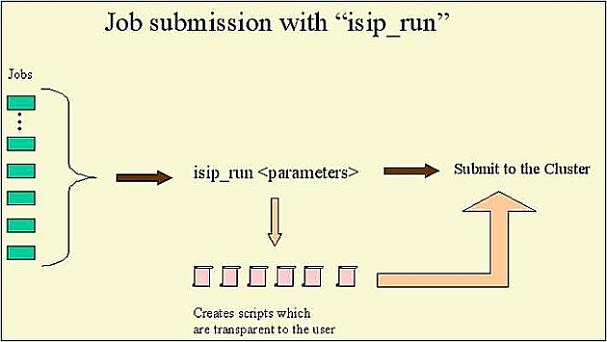|

At CAVS, we have one of the most powerful computing infrastructures
of any research center. We currently possess a 1000 node 1 GHz
cluster and a 300 node 3 GHz cluster. However such high computing power
is a waste if the the CPU utilization is low.
Currently, we use PBS to submit jobs to the cluster. It takes time
to get used to this system though, and each job requires a different
script. Hence, setting up the individual scripts becomes a
large task in itself. Such small things add to the overall
productivity. Here at the IES (Intelligent Electronic Systems) group at
CAVS, we are working on a tool
called 'isip_run' which automates the process of job submission to the
cluster. This tool will still use the default batch system, but it will
be transparent to the user. This can be thought of as a commandline
interface to the cluster. We are working at making this tool a general
purpose utility so that it can be used for various tasks other than
just speech jobs. For example we can run shell commands such as 'grep'
and 'find' in parallel.
The primary aim is to submit N jobs to M cpus. At ISIP, we were using a
similar tool, which was also called 'isip_run', but it was used only
for parallel training on servers. The conventional method to submit
jobs can be described by the diagram shown above.
The diagram illustrates the fact that every job needs a script,
and to generate these scripts we have to either write another
perl/shell script or generate them manually.
The aim of 'isip_run' is to automate this process so that the user
doesn't have to worry about creating scripts for submitting jobs. The
commandline interface for isip_run is as follows:
isip_run -mode < cluster/server > -cpus < N number/server_names list file >
-command_to_execute < any command including shell commands > *.*
-batch_options < any batch system options other than the default ones >
The commandline will also accept a list of files instead of '*.*' and
run jobs on those files.
Now, script generation and submission will be transparent to the user,
since the user just needs to run the above commandline.
The jobs will be
equally distributed to different cpus based on the number specified by
the user. The screen will display the process id of the jobs along
with the cluster name.
Sword_[4]: isip_run.exe -mode cluster -cpus 8 -command_to_execute 'ls -l' *.*
100166.Empire
100167.Empire
100168.Empire
100169.Empire
100170.Empire
100171.Empire
100172.Empire
100173.Empire
Sword_[4]:
The job submission process using 'isip_run' can be represented by the
following diagram:

It can easily be seen that the user does not have to worry about
splitting the jobs and setting up the scripts. Everything is taken
care of by 'isip_run'. This utility will be a part of our upcomming
release. If you do not currently have ISIP's software installed, you
may find detailed instructions on how to download and install our
software on your system
here.
|